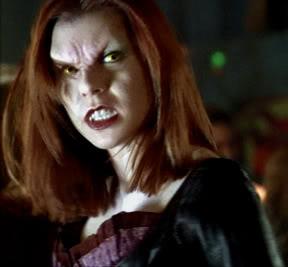 Courtesy of Open Graves, Open Minds
Courtesy of Open Graves, Open Minds
Daughter of Fangdom:
A Conference on Women and the Television Vampire
18 April 2015
The University of Roehampton
London
Following the success of TV Fangdom: A Conference on Television Vampires in 2013, the organisers announce a follow-up one-day conference, Daughter of Fangdom: A Conference on Women and the Television Vampire. Though Dracula remains the iconic image, female vampires have been around at least as long, if not longer, than their male counterparts and now they play a pivotal role within the ever expanding world of the TV vampire, often undermining or challenging the male vampires that so often dominate these shows. Women have also long been involved in the creation and the representation of vampires both male and female. The fiction of female writers such as Charlaine Harris and L.J. Smith has served as core course material for the televisual conception and re-conception of the reluctant vampire, while TV writers and producers such as Marti Noxon (Buffy) and Julie Plec (The Vampire Diaries and The Originals) have played a significant role in shaping the development of the genre for television.
Since vampires are not technically human, the terms male and female may apply, but representation of gender has the potential to be more fluid if vampires exist outside of human society. Given the ubiquity of the vampire in popular culture and particularly on TV, how is the female represented in vampire television? What roles do women have in bringing female vampires to the small screen? In what ways has the female vampire been remade for different eras of television, different TV genres, or different national contexts? Is the vampire on TV addressed specifically to female audiences and how do female viewers engage with TV vampires? What spaces exist on television for evading the gender binary and abandoning categories of male and female vampires altogether?
Proposals are invited on (but not limited to) the following topics:
• TV’s development of the female vampire
• Negotiation of gender and sexuality
• Evading binaries
• Female writers/ directors/ producers/ actors in vampire TV
• Adaptation and authorship
• Genre hybridity
• Female vampires in TV advertising
• New media, ancillary materials, extended and transmedia narratives
• Intersection with other media (novels, films, comics, video games, music)
• Audience and consumption (including fandom)
• The female and children’s vampire television
• Inter/national variants
• Translation and dubbing
We will be particularly interested in proposals on older TV shows, on those that have rarely been considered as vampire fictions, and on analysis of international vampire TV. The conference organisers welcome contributions from scholars within and outside universities, including research students, and perspectives are invited from different disciplines.
Please send proposals (250 words) for 20 minute papers plus a brief biography (100 words) to all three organisers by 15th December 2014.
s.abbott@roehampton.ac.uk
lorna.jowett@northampton.ac.uk
mike.starr@northampton.ac.uk





There are no responses yet